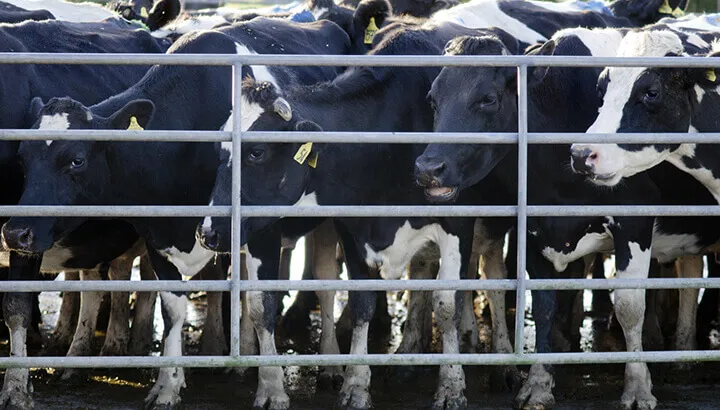
- Share on Facebook2
- Share on Pinterest
- Share on Twitter
If you are looking to make changes in any aspect of your life, it helps to take measurements. For people looking to increase their physical fitness level, taking body measurements is a great way to measure progress. Similarly, if you are trying to lead a more sustainable life, it helps to have a baseline metric to improve upon.
Often when we think about climate change or the impact we have on the planet, we think of society’s contribution as a whole. What are we doing to solve climate change? What have we done to cause it?
But now more than ever it is important to look at what we do as individuals. With talk of abandoning the Paris Climate Agreement and rolling back policies to reduce greenhouse gas emissions, it’s vitally important to focus on what you can do. Measure your carbon footprint and then seek to improve on that number. It’s is a perfect way to move towards the change you want to see on a larger scale.
What is a carbon footprint?

A carbon footprint is a measurement of how much CO2 you are contributing to the atmosphere. Ergo, it is a measurement of how much your actions are contributing to climate change.
It measures your direct contributions (i.e., driving a car, heating your home). It also measures your indirect contributions that result from the transportation or manufacturing of the things you buy (how far your food travels to get to you, how much you buy).
While some carbon footprints are more detailed than others, generally you will be asked to provide information regarding your activity in four categories:
- Diet
- Transportation
- Energy usage
- Spending (the buying of stuff)
Some footprints will calculate a score that compares you to national averages. The important part is that you have a metric that you can improve upon.
How can I measure my carbon footprint?
Many nonprofit or governmental organizations offer free carbon footprint calculators on their websites. While these calculators are usually the most basic, it can be a good starting point for those who have never used one before.
The World Wildlife Fund has a carbon calculator that takes only five minutes to fill out. It will compare you to the average person in your country. The Environmental Protection Agency also has an easy-to-use footprint calculator. It links to a page that you can use to measure your car’s fuel efficiency as well.
Other organizations go a step further with their footprint mapping. Websites like CarbonFootprint.com offer carbon offsets as well as a footprint calculator. A carbon offset can be purchased by someone who wishes to show carbon-neutrality in their activities.
Carbon offsets
An example of a carbon offset would be a financial contribution made to a renewable energy project or the planting of trees. More renewable energy means less use of fossil fuels. More trees mean more CO2 absorbed out of the atmosphere. Each results in a decrease in greenhouse gas emissions.
Say you decided that you want your vacation to be carbon-neutral. You would first use a carbon footprint calculator (or your own brain if you are super-smart). The calculator would determine the amount of CO2 emissions you are contributing to (plane travel, cabs, other purchases). Then you’d purchase an equal amount of carbon offsets.
This way, while you contributed to greenhouse gas emissions by taking a flight and other activities, you also caused an equal amount of emissions to be reduced elsewhere. That’s a carbon-neutral vacation.
Similarly, companies will purchase offsets if they want to report a net reduction in their overall greenhouse gas emissions. Whether it is a business or individual, it all starts with taking that initial measurement and then improving gradually.
So, what impacts your carbon imprint? Most things, to be honest, but some more than others. Here are some contributing factors.
Where does your food come from?

Where your food comes from plays a big role in how much of an impact you have. It may seem like those strawberries shipped from halfway across the continent aren’t going to impact your carbon score. But the role you play in produce being shipped long distances is calculated into your carbon footprint.
If the food you eat is coming from far away, that is going to have a nasty impact on your carbon footprint. As a result, most environmental organizations will recommend eating local as much as possible to keep your impact to a minimum.
Eating local can be tough, especially if you are a Canadian who thinks pineapples are delicious (they are). Often the easiest way to eat local is to head to your local farmer’s market and see what produce is available.
The Department of Agriculture also has a handy listing of farmer’s markets. Simply type in your zip code and see what’s near you. It’s also never a bad idea to look for markets outside of what is listed there.
Meat consumption
The United Nations Food and Agricultural Organization lists livestock’s contribution to climate change at approximately 14.5 percent. This point was muddied a little bit in a recent award-winning documentary “Cowspiracy,” which listed livestock’s contribution to greenhouse gas emissions at 51 percent. The number was disputed by the Union of Concerned Scientists and updated statistics have been provided on the film’s website.
Regardless, the overall message is that livestock impacts the planet. A recent study out of Oxford University concluded that if everyone switched to vegetarian diets it would reduce the amount of greenhouse gasses from food production by 63 percent. Wow!
Environmental organizations are quick to point out that you do not need to go completely vegetarian to see a benefit in your carbon footprint. Large numbers of people reducing their meat consumption will have a far bigger impact than a small number of people eliminating meat from their diet altogether.
Many experts recommend going without meat for one day a week. Then try to increase that number gradually. Your progress will be reflected in your carbon footprint score.
Transportation
How often you walk, bike, jog, jig or drive plays a large role in your overall carbon footprint (jigging is carbon-neutral, by the way).
Many carbon footprint calculators will want to measure the fuel efficiency of your car. Others will ask more general questions, such as if you drive a hybrid, electric or gas-driven car. How often you share rides or carpool will also factor into your score.
So far, the larger footprint calculators have not included Uber or other ride-sharing services into their scores. Uber does offer UberPool, however, where users can choose to share rides with others. The company Travel Green also allows you to purchase offsets in direct proportion to your Uber rides.
There isn’t much to improving your score in this area. Simply drive less to lower your score.
Energy

Advanced carbon calculators will go into more precise numbers of how much energy you are using in your home or business, but most general calculators stick to the basics.
In general, it is a calculation of how big your home is, how many people live there, how much energy you use and what kind of energy it is. Lowering your footprint in this area is often easier than it appears.
Easy first steps include switching to energy efficient light bulbs and taking steps to prepare your home for all seasons. Larger steps can include switching to a green energy supplier or installing energy efficient appliances.
Any renewable energy generated from your home also counts as a carbon offset. A great way to ensure that you are offsetting your emissions is to have solar panels placed on your roof. This used to require a heavy upfront fee that was cost-prohibitive for a lot of people. But now entrepreneur/superhuman Elon Musk’s company SolarCity has panel leasing programs aimed at making it easier for homeowners.
The stuff you buy
Measuring this part of your life is much more difficult than with other categories. Tracing back the roots of many of the products we buy is a long and sometimes impossible journey. In general, the less stuff you buy, the fewer resources used, forests cuts down and fossil fuels burned.
Make the changes stick
Oroeco is a free app that aims to make your changes stick. It uses the time-honored method of public shaming for this purpose. While most calculators compare your score to national averages or people in your area, it is almost always anonymous. Not with Oroeco, though! You connect with your friends and compete to be the most eco-friendly.
Where this app is most handy is for people who are on the “Green Committee” at work, an environmental club at school or similar group. Encourage people to sign up, meet monthly and help each other improve scores. Don’t make it a competition, though. Just have everyone try to improve their score a little each month.
Your first carbon footprint measurement can be taken in as little as five minutes. It just might be the most important tool you have in your quest to lead a more sustainable life.
— Ian Carey
- Share on Facebook2
- Share on Pinterest
- Share on Twitter

